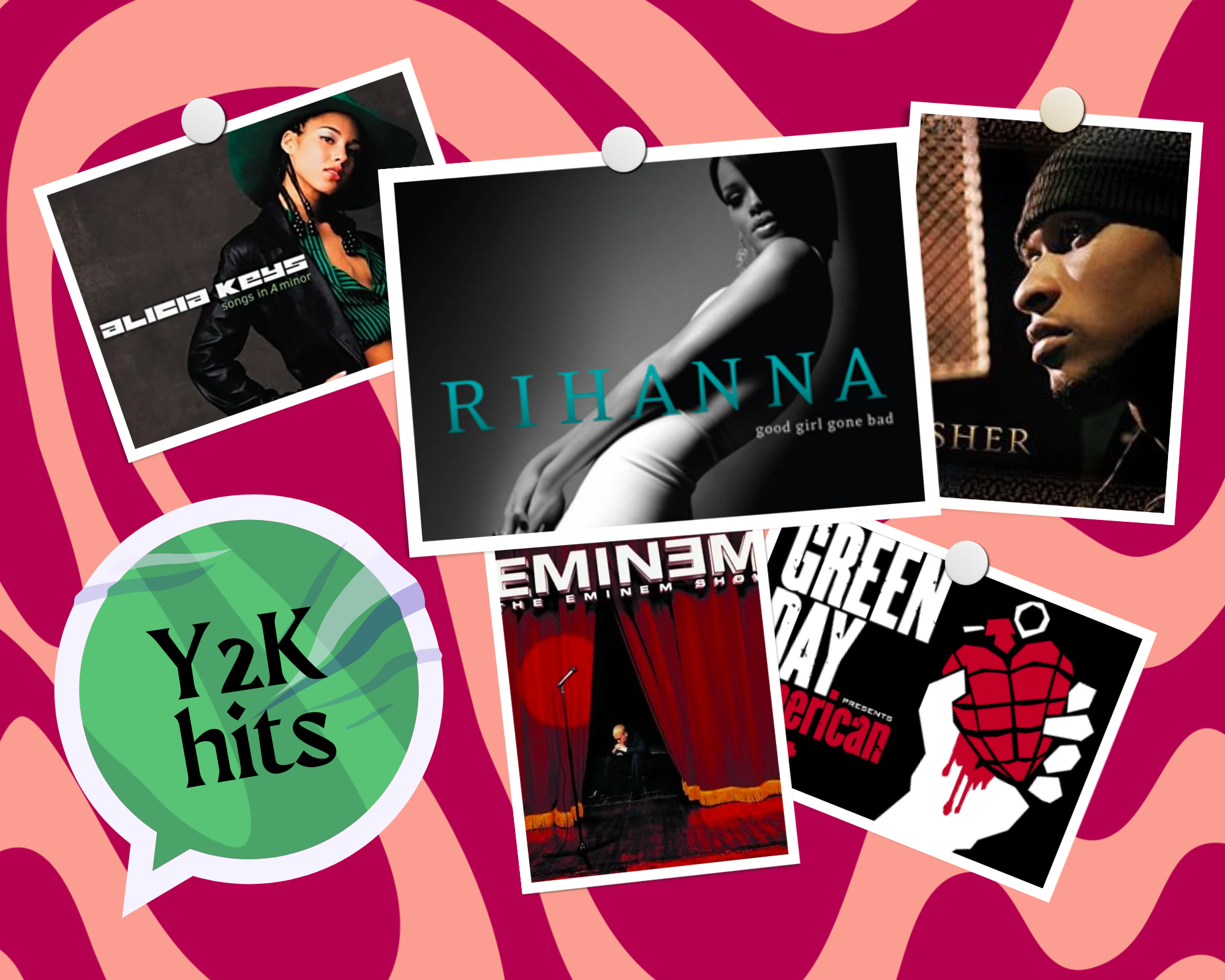Welcome to Y2K Hits, a column committed to exploring the most popular albums of the 2000s and the lasting marks they left on the music industry and pop culture at large.
After the success of her first two albums, “Music of Sun” and “A Girl like Me,” the 19-year-old Rihanna was still attempting to leave her permanent mark on the music industry. One of Def Jam’s newest signees in the mid-2000s, the Barbadian artist had already received mainstream attention for tracks “SOS,” “Pon de Replay” and “Unfaithful.” But despite top-charting success in her nascent career, some critics believed that her previous albums had lacked the boldness needed to propel her into the next stratosphere of pop stardom.
The eventual follow-up, “Good Girl Gone Bad,” was both a departure from the tunes that had put Rihanna on the map in years prior and the kick she needed to become the global phenomenon she is today. The album abandoned many of the dancehall and reggae sounds that spanned her first two albums. Instead, a medley of dance-pop and R&B populated the tracklist.
The record opens with the hit track “Umbrella” featuring Jay Z. This song was one of my first forays into popular music: around 2007-2008, I remember hearing it basically everywhere. “Umbrella” contains one of the most recognizable hooks of the past 20 years: “You can stand under my umbrella, ella, ella, eh, eh, eh.” The switch from the hi-hat instrumental to the kick drum beat in the middle of the song is pleasing to the ear, and Rihanna’s verse at this point is very melodious.
The 2000s saw a surge of electronic dance pop, and this album includes a couple of classics of the genre. “Don’t Stop the Music” is one such album highlight, as its bass-heavy beat and layered synth rhythms provide a firm instrumental for a classic nightclub song. Also, the hooks in the track are catchy, including the “Mama-say, mama-sa, ma-ma-ko-ssa” sample from Michael Jackson’s “Wanna Be Startin Somethin.”
The aforementioned two songs were just part of the dance-pop and electro-pop craze that would dominate the late 2000s to the early 2010s. Years later, Lady Gaga, Katy Perry and Kesha would follow in the footsteps of Rihanna and release songs of their own that featured electro-pop. Many of these tracks contained simple lyrics, groovy beats, voice alterations and heavy use of synthesizers. While she might not be the sole pioneer of the electro-pop craze, Rihanna certainly helped in setting industry standards for the rest of the decade.
“Hate that I love you,” which featured songwriting and vocals from R&B star Ne-Yo, was another delightful addition to the variety of Rihanna’s record. While the chord progression and ballad lyrics are simple, Ne-Yo’s voice provides a richness to the performance. His harmonies with Rihanna toward the end are highly engaging.
While I have mostly praised the record so far, that’s not to say there aren’t any notable problems. “Shut Up and Drive” is one of the more disappointing songs on the record, as it didn’t seem to match Rihanna’s vocal range. In retrospect, it shows how far Rihanna has come technically, as her more recent tracks contain far more weighty vocals. In comparison, her performance in “Shut Up and Drive” feels barren.
Moreover, the track “Say It” felt contrived, as if Def Jam was trying to pigeonhole Rihanna into sounding like the R&B vocalists of the ’90s. Again, it’s important to remember that she was just 19 years old when this album dropped, so one shouldn’t be too critical of the blemishes.
If the first part of the album feels perfectly curated to produce top-40 dance-pop hits, the second half is more restrained, with slower tempos and more elements of R&B in the mix. In this section, “Rehab” is the album’s most tuneful song (and biggest forgotten gem). Although the overpowering tambourine somewhat drowns out the piano and string instruments, the key changes, harmonies and melodies make the song a solid listen.
The album could’ve used more of the R&B ballads that Rihanna would produce later in her career. These should have replaced some of the tunes in the middle of the album that ultimately didn’t deliver the best production or vocal performances.
Luckily, in the reloaded version of the album that would drop a year later, Rihanna added the two fantastic tracks “Take A Bow” and “Disturbia.” The former is one of the better R&B ballads in her discography, as she narrates a story about getting over her cheating ex-boyfriend. The melody, along with the piano and synth instrumental, perfectly match the track’s lyrics. Rihanna’s humming is seamlessly integrated with the rest of her verses, culminating in a confident vocal performance.
“Disturbia” is another dance-pop track, and its catchy hook and bass drum beat are reminiscent of “Don’t Stop the Music.” Nonetheless, the driving beat gives the song the energy needed to turn it into another iconic club song.
While “ANTI” and “Unapologetic” were later albums that featured better instrumentals and vocal performances, the top hits from “Good Girl Gone Bad” still stand tall alongside the best songs of Rihanna’s career. The dance-pop smash hits from the record are still played in public venues to this day and bring back fond memories for those in their 20s and 30s.
Some may argue that the record feels one-dimensional in its proclivity toward nightclub music, but songs like “Rehab” and “Take A Bow” showcased hints of Rihanna’s penchant for balladry before it emerged more clearly in her later discography. With the benefit of hindsight (and given that the most famed tracks have stood the test of time) I can give this record nothing less than a very solid grade.
Rating: 80/100
Editor’s Note: This article is a review and contains subjective opinions, thoughts and critiques.
